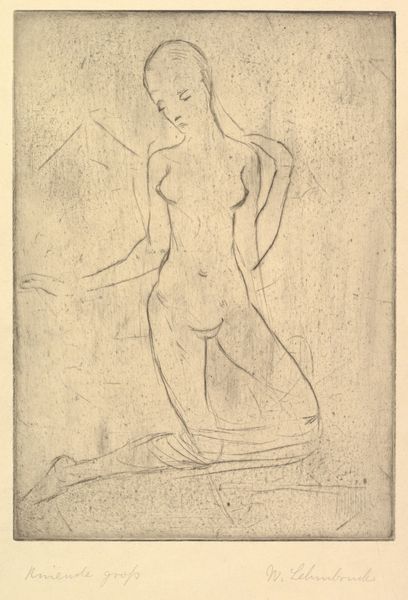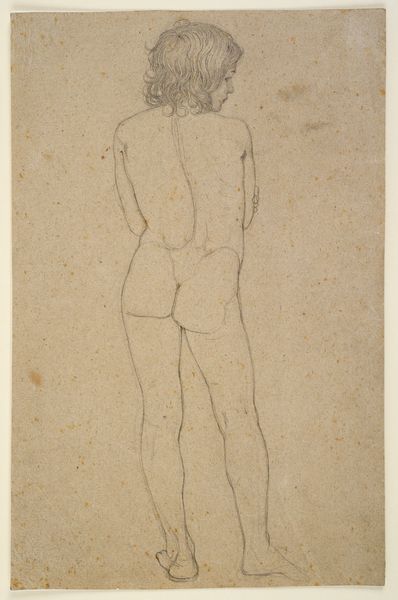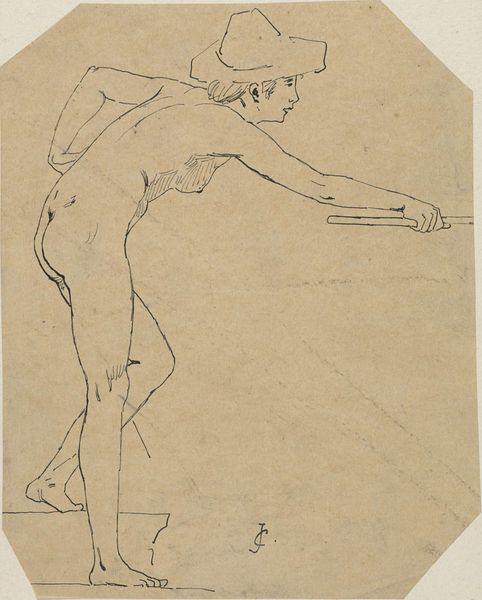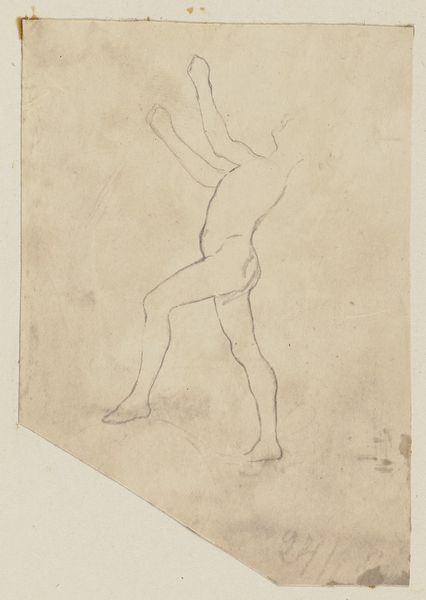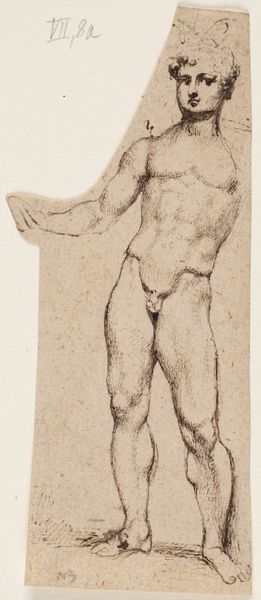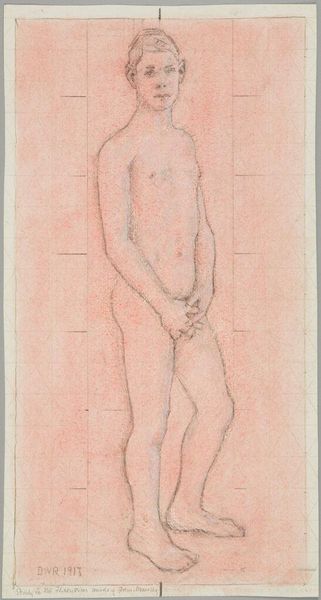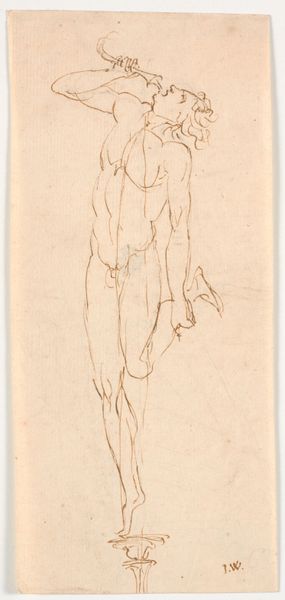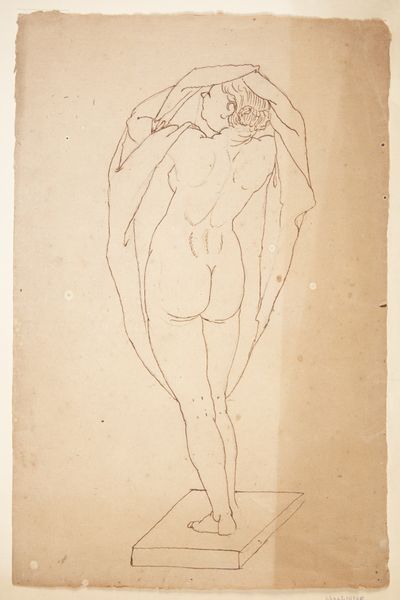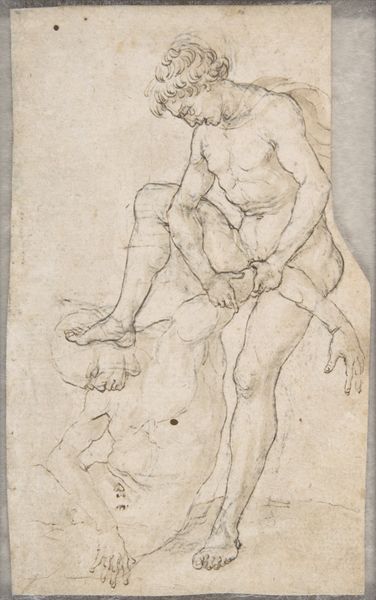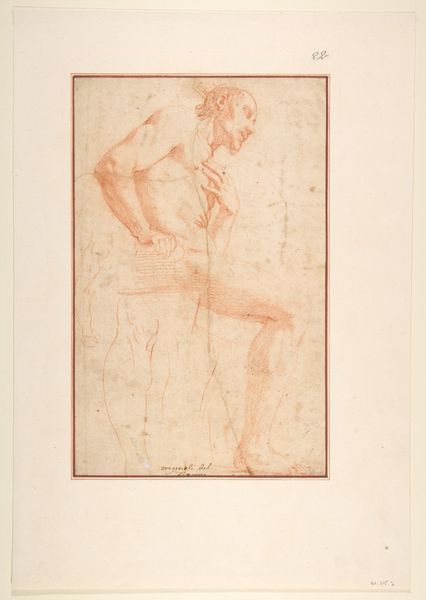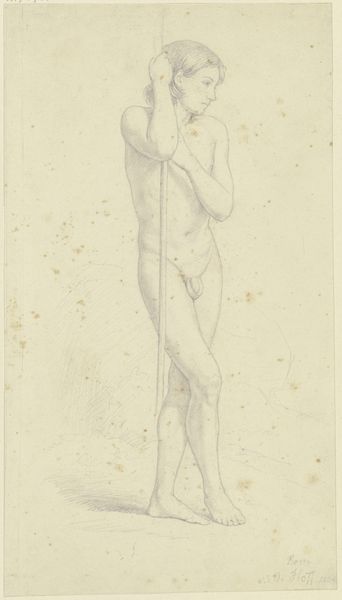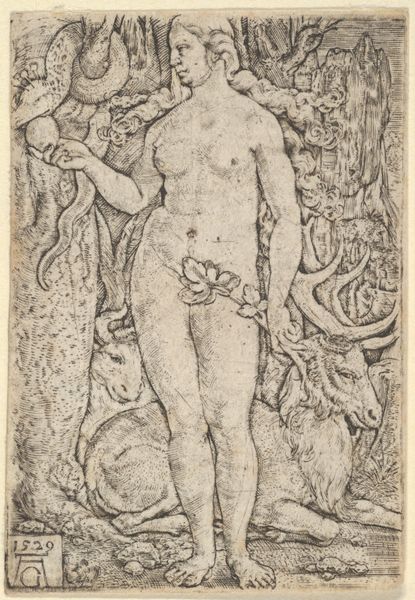
drawing, pencil
#
portrait
#
drawing
#
neo-impressionism
#
figuration
#
coloured pencil
#
pencil
#
academic-art
#
nude
Dimensions: overall: 26.4 x 16.1 cm (10 3/8 x 6 5/16 in.)
Copyright: National Gallery of Art: CC0 1.0
Curator: Let's turn our attention to Georges Seurat’s "Study after 'The Models'," created around 1888. He employed pencil and perhaps coloured pencil on paper for this work. Editor: My first thought is how delicate and ephemeral it seems, almost like a fading memory captured with the subtlest touch of the pencil. I’m drawn to the pointillist texture. Curator: Indeed. While famed for his pointillist paintings, Seurat was a master of conté crayon and pencil, showcasing incredible command over tone and texture. This study offers a glimpse into his working methods, providing insight to the production of art and highlighting how academic skills in the life-drawing enabled future creativity in Seurat. Editor: I'm fascinated by how the labor intensive methods work across mediums. It challenges these categorizations to see Seurat bring an analogous, dot-like facture in drawing practice to pointillism, most known in painting. Did these life models work for other neo-impressionists too, and what were their wages? Curator: Records about the specific models' compensation during that era remain scarce. Nevertheless, we see that Seurat challenges traditional figure drawing, by pushing tonalism towards neo-impressionist practices of painting in line with his fellow members such as Paul Signac. It makes me wonder how such artistic groups shaped labor demands in studios at that time. Editor: Well said, but also worth mentioning is that, through materiality we recognize this "Study"’ as an artistic product, which might challenge assumptions of ‘fine art’ versus preliminary sketch that seems essential for all media of work production. The cross-hatching here mimics color mixing—interesting in comparison with paint, yes? Curator: Absolutely! The materiality pushes the boundary, leading us away from purely formal consideration, acknowledging that Seurat’s practice itself involved studio arrangement and marketing practices during a very important art historical moment where academics were redefined Editor: This has pushed my thoughts too. I look with newfound admiration seeing Seurat’s labour to create what looks minimal now. Curator: A study not just of form, but also a window onto a transforming world of artistic labor.
Comments
No comments
Be the first to comment and join the conversation on the ultimate creative platform.
